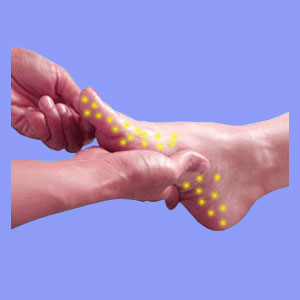
Tingling feet or a single tingling foot are very typical signs of possible sciatic nerve involvement. The sciatic nerve is the largest nerve is the body and is responsible for serving the neurological needs of virtually the entire lower anatomy, including the feet. Sciatica tingling, also called pins and needles, is a symptomatic expression which may exist by itself or in conjunction with weakness, numbness or pain.
This essay will discuss tingling in the feet which is caused by sciatica and other unrelated conditions. Learn the relevance of pins and needles in the feet, as well as better understand what causes foot paresthesia.
Tingling Foot Diagnoses
Tingling, in association with sciatica, can come about due to many possible issues, including both structurally-motivated factors and psychosomatic causations.
Anatomical diagnoses may include spinal stenosis, foraminal stenosis, piriformis syndrome, sacroiliac joint problems, diabetes, and a host of other more specific concerns.
Psychosomatic tingling is often the actual source of symptoms, even when a structural diagnosis is made. Remember that many sciatica diagnoses are made by exclusion and some even by guessing.
For patients who have endured long-term symptoms without resolution, despite a plethora of seemingly appropriate treatments, I typically look to diagnostic error as the real reason for the ongoing agony.
Tingling in the feet may also be caused by conditions not related to sciatica, including localized neurological dysfunction or injury, circulatory problems in the feet or even a foot-specific diagnosis, such as metatarsal tendonalgia, plantar fasciitis or tissue necrosis.
Tingling Feet Treatment
Spinal stenosis and foraminal stenosis are often theorized as the source of pain, when many times, they are coincidental to the symptoms endured. In these cases, patients typically go through the gauntlet of conservative care and do not feel any lasting relief. These poor souls sometimes wind up in the operating room, the victims of unneeded surgical interventions. Now, they do have a real problem with their spines, whereas before, they were simply misdiagnosed.
In cases where nerve or spinal cord compression is a correct diagnostic verdict, supported by verified evidence collected from imaging studies and neurological testing, treatment is often successful.
Patients are always advised to spend time and effort during the diagnostic process to be sure the conclusion is sound before ever beginning any treatment plan. The same holds true for SI joint and piriformis concerns, with the exception of surgery, since it is a very rare occurrence for these diagnoses. However, patients usually suffer year in and year out, all the while receiving treatment for a condition which may only be a scapegoat.
Piriformis syndrome is sometimes an incomplete diagnosis, with the piriformis clamping down on the sciatic nerve due to some yet unidentified process. If the muscular compression is merely an effect of a greater source process, then treating it as a separate causative condition will have disappointing results. Likewise, SI joint symptoms are usually localized and rarely extend far enough to be considered sciatica. In these cases where a SI joint diagnosis is made, yet pain, tingling or numbness exist in the legs or feet, neurological correlation is strongly advised.
Tingling Feet Tips
Long enduring sciatica is often a natural result of ischemia, or some other localized or systemic process, even when coincidental structural issues exist in the spine. In these cases, the patients are rarely correctly diagnosed and do not receive appropriate treatment. This is why I tell all sciatica sufferers to take an active role in your own care. Get involved and learn what is causing your pain definitively and what is not. Remember, without an accurate diagnosis, your chance for a successful cure is nil.
Sciatica care, like most medical specialties, can over-compartmentalize the human anatomy and not see the bigger picture in many patient complaints. Therefore, wider ranging health issues might not be discovered, since all the attention is focused on the lumbar spine.
Sure, most people will demonstrate the typical signs of lumbar degeneration which might be blamed for causing sciatica. However, when evaluated objectively by a qualified neurologist, most of the usual bone and intervertebral disc conditions implicated in sourcing tingling feet, and other sciatica expressions, will prove to be innocent and the accusations deemed unjustified. This is not an absolute rule, by any means, but does explain why some patients do not ever recover, despite highly focused and seemingly successful care which resolves these very same lumbar structural issues.





